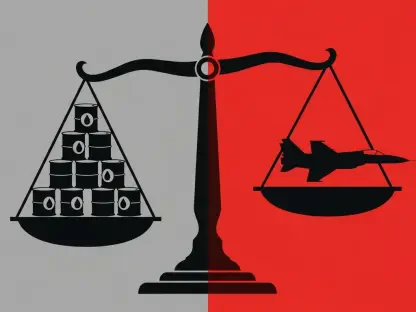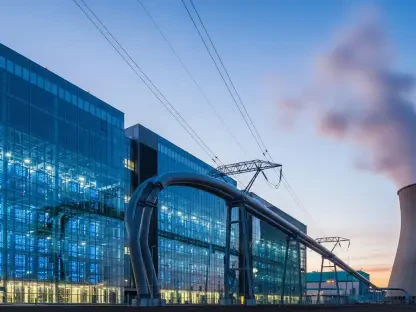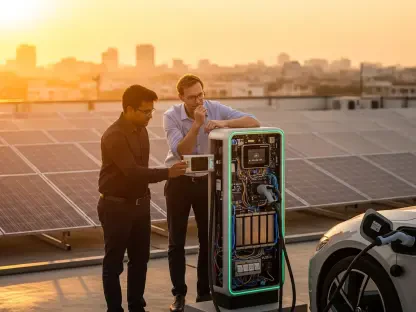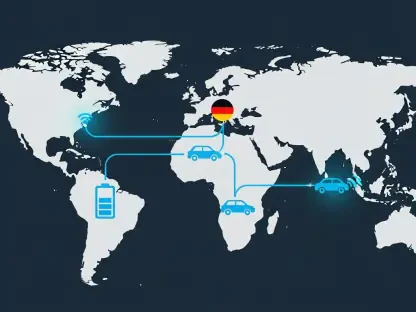The Australian federal government’s decision to ramp up its home electrification efforts marks a significant step towards promoting renewable energy on a broader scale. Under the stewardship of Climate Change and Energy Minister Chris Bowen, the initiative aims to help property owners not only decarbonize their homes but also reduce emissions and cut energy costs. This investment follows the remarkable success of a pilot project in New South Wales and paves the way for nationwide expansion.
Success of the Illawarra Pilot Project
Electrify 2515: A Community-Led Initiative
The pilot project in the New South Wales Illawarra region, known as Electrify 2515, stands as a testament to the potential benefits of community-focused initiatives. With $5.4 million in subsidies, this project has engaged 400 households, a substantial portion of which are low-income families. By collaborating closely with locals and ensuring active participation, Electrify 2515 has demonstrated that electrification can be both practical and effective at the community level.
The project focuses on real-world solutions by replacing gas appliances with electric alternatives, leading to a notable drop in energy consumption and costs. Among the participating households, there has been a significant reduction in emissions, underscoring the environmental benefits. This community-led approach not only builds trust but also sets a strong example for similar projects across the nation.
Financial and Environmental Benefits
Participants in the Electrify 2515 initiative have reported considerable financial savings, a key factor driving the project’s popularity and success. By transitioning from gas to electric appliances, households have experienced a pronounced decrease in their energy bills, translating to significant savings over time. According to CSIRO estimates, fully electrified homes could save up to $2,000 annually on power bills, making a compelling case for the economic advantages of this program.
The environmental benefits are equally notable. Reduced reliance on gas appliances translates to lower carbon emissions, contributing to national and global efforts to combat climate change. Electrify 2515 has not only improved household financial health but also played a crucial role in fostering a sustainable energy future.
Expansion of Funding and Support
Grants and Low-Cost Loans
To facilitate the nationwide expansion of home electrification, the Australian government is providing substantial financial support in the form of grants and low-cost loans for homeowners. These means-tested grants, which can be as high as $10,000 per household, are designed to assist in replacing gas appliances with electric alternatives like water heating systems and electric stovetops. This financial aid aims to make the transition both affordable and appealing for a wide range of property owners.
In addition to grants, the government is also offering low-interest loans for investments in electric vehicles, solar panels, and batteries. These loans make it easier for homeowners to embrace renewable energy technologies, further reducing their carbon footprint and energy costs. The dual approach of grants and loans ensures that financial barriers are minimized, encouraging broader participation and adoption of electrification initiatives nationwide.
Political Negotiations and Commitments
The expansion of the funding scheme is partly rooted in political negotiations and commitments made by the government to secure the passage of the Future Made in Australia laws. Last year, the government engaged in discussions with crossbench MPs, including David Pocock, David Van, Jacqui Lambie, and Lidia Thorpe, agreeing to reinforce household electrification efforts as a key intervention. These political commitments aim to deliver substantial and permanent reductions in power bills, serving as a cost-of-living relief measure without exacerbating inflation.
This political backdrop underscores the importance of household electrification in the broader context of Australia’s energy policy. By focusing on proven, renewable strategies, the government aims to achieve both economic and environmental benefits, presenting a stark contrast to alternative energy proposals. The initiative reflects a commitment to sustainable energy practices and lays the groundwork for long-term policy stability and support.
Personal Success Stories
Catherine Dan’s Experience
One of the many compelling success stories emerging from the electrification program is that of Canberra resident Catherine Dan. By converting her home’s appliances to electric alternatives, Dan has achieved remarkable financial savings, reducing her energy costs by 70% within just two years. Her experience highlights the tangible financial benefits available to households across the nation through the electrification program.
Dan’s story is not an isolated case but a strong indication of the potential for widespread economic gains. The reduction in energy bills has not only improved her household’s financial stability but also demonstrated the effectiveness of the electrification program. Her experience serves as a powerful example for other property owners, illustrating how making the switch to electric can lead to significant savings and energy efficiency.
Broader Implications and Support
The broader implications of home electrification are championed by Saul Griffith, the visionary behind the Electrify 2515 project. Griffith envisions similar community-led projects playing a crucial role in Australia’s energy future. He emphasizes that electrification not only reduces costs but also enhances the reliability of energy systems, promoting a more sustainable and resilient energy landscape.
Building trust within the community has been a pivotal factor in the program’s success, according to Griffith. The grassroots approach in Illawarra, which has actively engaged and involved local residents, has proven effective in fostering social acceptance and confidence. By replicating these community engagement strategies, the government hopes to achieve high adoption rates and ensure the success of electrification projects on a larger scale.
Nationwide Electrification Projects
Lower Costs and Increased Reliability
The anticipated benefits of implementing electrification projects on a national scale are both multifaceted and far-reaching. By reducing reliance on gas and transitioning to electric alternatives, these projects promise to lower household energy costs significantly. The estimated annual savings of up to $2,000 per fully electrified home underscore the potential financial relief for property owners, highlighting an accessible and practical economic advantage.
In addition to cost savings, electrification can enhance the reliability of energy systems across Australia. By diversifying energy sources and integrating renewable technologies, households can benefit from more stable and dependable energy supply. Analysts argue that nationwide electrification initiatives offer a clear and practical alternative to nuclear energy, presenting solutions that are more feasible and less contentious.
Community Engagement and Adoption
Achieving high adoption rates for electrification projects requires fostering social acceptance and confidence within communities. The success seen in the initial stages in Illawarra, where community engagement has been particularly strong, serves as a model for further initiatives. By extending the reach of these projects, the government aims to replicate these successes on a larger scale, ensuring widespread benefits.
Community involvement is essential for the success of any large-scale electrification project. By actively involving local residents and addressing their concerns, the program can build trust and encourage more households to participate. This community-centric approach has already proven its effectiveness in Illawarra, demonstrating that grassroots engagement can drive meaningful and sustainable change.
Energy Policy and Political Landscape
Federal Election and Energy Policy
As Australia heads towards the federal election, energy policy is set to become a major battleground. The opposition has already signaled its intention to revoke some of Labor’s key energy policies, including emissions reduction targets and several renewable energy projects. Instead, they propose a shift towards nuclear energy, a move that has sparked considerable debate and controversy within the political landscape.
However, Climate Change and Energy Minister Chris Bowen has dismissed these plans as a “nuclear fantasy,” emphasizing the government’s commitment to proven renewable energy strategies. By focusing on established and effective methods, the government aims to offer a clear and viable alternative to the nuclear energy proposals put forth by the opposition. This approach highlights the contrasting visions for Australia’s energy future and underscores the importance of sustainable, renewable solutions.
Divergent Views on Energy Future
The Australian federal government’s recent decision to amplify its home electrification efforts represents a crucial move towards embracing renewable energy on a larger scale. Spearheaded by Climate Change and Energy Minister Chris Bowen, this initiative strives to aid homeowners in transitioning to greener energy solutions. The focus is on decarbonizing residential properties, which would lead to a significant reduction in emissions and help cut energy costs for households. This expanded investment stems from the noteworthy success of a pilot project conducted in New South Wales, which demonstrated the potential and effectiveness of such measures. Building on these results, the government aims to roll out similar programs nationwide. By supporting the adoption of renewable energy, this plan not only addresses climate change concerns but also offers economic advantages to property owners by lowering their energy expenses. The overall objective is to create a sustainable and cost-efficient energy model that benefits both the environment and residents across Australia.









